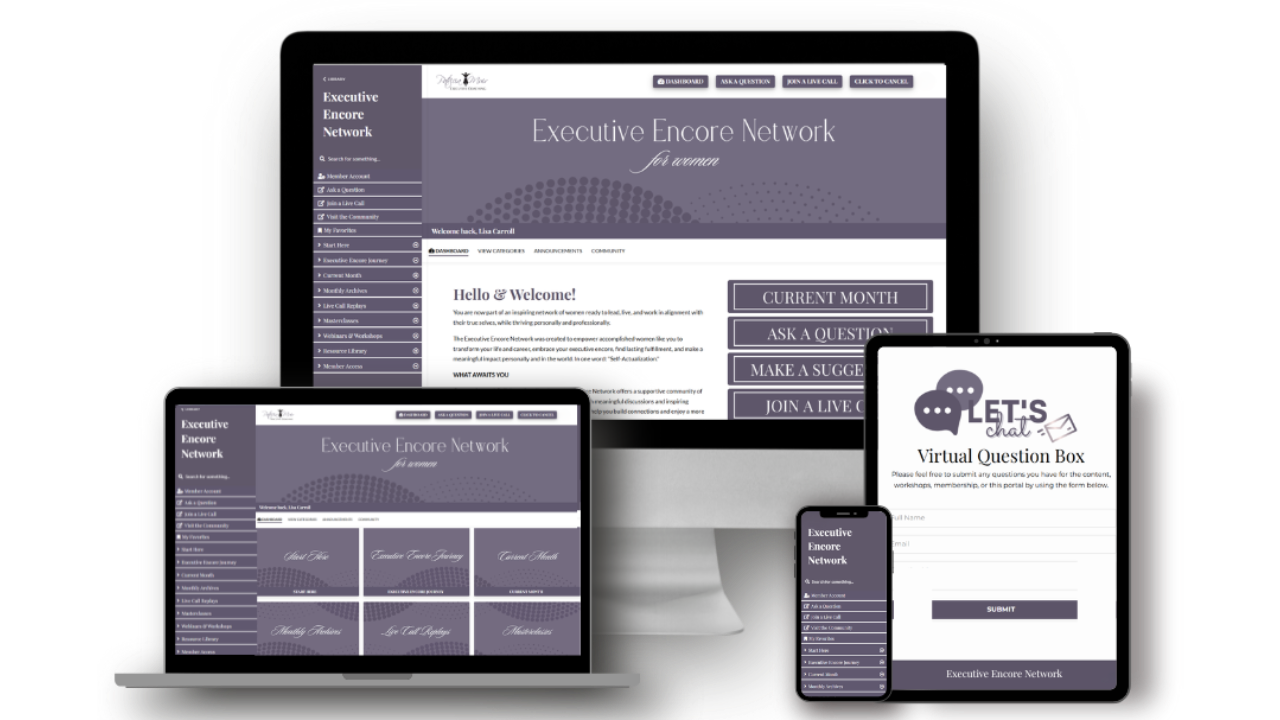
The Importance of Coaching and Mentoring in 2022 - Measuring Coaching Effectiveness and Impact
Jan 21, 2022"Coaching, as hard as we try, doesn’t fit into a neat, tidy, contained box. We’ve worked hard to define coaching, develop the science of it, measure it, teach it, assess it, prove the ROI of it. This helped to make our profession more credible and legitimate. However, paradoxically, is this also limiting its potentials?"
~ Avoiding the Iceberg. Is it time to change course. Terrie Lupberger, MCC – CoachU Blog September 20, 2021
How do we best measure the effectiveness of coaching? Do we have a formula for measuring the return on investment – (ROI)? If ROI is to be our primary measurement, I have a few questions:
- Do we measure topline impact and/or bottom-line performance?
- What methodology do we use?
- Is coaching an investment or an expense?
- Why do we classify coaching with other professional development programs as an “expense” on Financial Statements?
With an all-time high in the number of entrepreneurs, gig workers, and the focus on leadership development, we are scrambling to find a reliable way to measure the impact of coaching.
The challenge in measuring the effectiveness and impact of coaching using empirical ROI measurement methodology was summed up in an article in 2004, The Wild West of Executive Coaching. According to the authors, Stratford Sherman and Alyssa Freas, reliable information is scarce. The article referenced Anthony M. Grant who teaches coaching psychology at the University of Sydney, Australia. Grant surveyed studies on coaching of all kinds - way back to 1937. His conclusions included “few met standards of reliable methodology” and “in general, the quality of research is extremely poor”.
Since 2004, I have scoured articles presented by credible sources including accredited coach training organizations and the International Coach Federation (ICF). The attempt to measure ROI using empirical methods has yielded “wild” results – according to various sources and statistics:
- Figures of between 500% and 700% commonly reported as reliable ROI for executive coaching. Anderson, 2008 (Source: iPEC Coach Training, IPEC Coaching.com)
- Executive Coaching produced 788% ROI. 86% of organizations saw an ROI on the Coaching engagements, and 96% of those who had an Executive Coach said they would repeat the process again. (Source: International Coaching Federation (ICF), June 30, 2021 via Google Search “ICF statistics on ROI of coaching”)
When applying common ROI standards for evaluating coaching, training, and leadership development programs, the number of variables challenge the ability to establish reliable data.
How Do We Quantify Data of a Qualitative Nature?
Anecdotal stories about "before and after coaching" are subjective and often dismissed or not trusted as sound evidence. But, how can we ignore that “96% of those who had an Executive Coach said they would repeat the process again.”
Any organization would love to have 96% repeat clients.
With the significant changes and shifts we are experiencing in our lives, our workplace, and our businesses, we might never have a simple formula for measurement. We need to consider perceived impact when human behaviour flows and adapts with changes in the economy and social conventions.
If we insist on qualitative data for ROI, perceived value through an individual’s or organization’s experience will be minimized and trivialized as subjective, less reliable, and less credible. I know from my own experience that it is very difficult to replicate a program and promote its success and value when outcomes are measured as “good” or “very good”.
Measuring the Impact of Coaching Using the Net Promoter Score (NPS)
Two-thirds of Fortune 1000 use NPS to measure the quality of customer experience and employee experience. There is growing interest in applying the NPS concepts to personal branding. What is Your Personal NPS Score?
Why not use the NPS methodology to apply a score to measure the quality and impact of coaching? In the world of NPS, the 96% statistic above reflects the concept of "Promoters". This clearly supports evidence of positive impact of the coaching experience. The question “Would you repeat the process?” reflects what is revered as the ultimate NPS question, “How likely would you recommend to a friend or colleague?”.
I utilize the NPS methodology to evaluate the impact of coaching with my clients, their positive experience, and achievement of their key goals as per their coaching plans. ~ Patricia A. Muir
Promoter of Coaching - The Marketplace
Perhaps the most vocal promoter of coaching for executives for leadership development is the marketplace. Top corporations and leading organizations are among those that invest heavily in hiring coaches for their executives. According to ibisworld.com, 2021 annual spending on business coaching in the U.S. will reach $10.9 billion.
Organizations, entrepreneurs, and even gig workers with smaller budgets are wise to follow. Successful companies don’t throw money at programs that don’t have a positive impact on their bottom line.
Measuring the Topline Impact
Let’s not forget about the topline impact. How are we improving lives? How are we improving the workplace culture? We can continue to label the impact as ROI if that is what corporate buyers are looking for, but let’s expand beyond empirical measurement that misses some of the most important indicators.
To measure the effectiveness of coaching, let’s observe transformation of and impact on individuals, teams, the workplace, and organizations in the following:
- Productivity – efficiency, time and energy management, reduced burn-out
- Outlook/feelings – optimism, engagement, expression of joy and job satisfaction
- Specific behaviours and/or skills – emotional intelligence, communication, problem-solving
- New insights that support progress toward goals and alignment with values - compliance to integrity-based culture, effective hiring and retention, positive workplace, health, safety, and well-being
AND
- Qualitative and quantitative measures: specific feedback, NPS scores, self-reporting, retention, etc., and what matters most to the coaching client and the coaching sponsor
Of course, what matters most to the client is a critical component in measuring success. The act of hiring a coach or consultant does not guarantee success. My next post will address how to maximize your investment in coaching.
You can reach me on LinkedIn. Or click to Get in Touch.
- Learn more about emotional intelligence leadership by subscribing for updates and downloading the EQ Worksheet.
- Check out the THRIVE in Work and LifeTM programs.
- Check out the online mini-course Your Building Blocks to Emotional Well-Being and Resilience.
- Feature Video: The Secret to Creating a Sustainable Business Foundation - Best Practices For Female Entrepreneurs
Related Blogs:
Next Steps
You don’t need to navigate your Executive Encore alone. Discover a better way to take charge of your experience.
- Schedule a 30-Minute Complimentary Executive Encore Call.
Ready to elevate your encore chapter?
- Join the Executive Encore Network for Women, a membership and community of supportive women ready to inspire and uplift. Subscribe to the Sunday Encore to begin your Executive Encore Journey and register for the next Tour to learn more.


